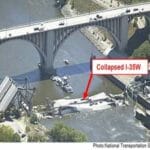- Course No E – 1880
- PDH Units: 1
No data found for Custom Course Number
No data found for Custom Course Units
- Course No E – 1880
- PDH Units: 1
Intended Audience: civil, environmental and mechanical engineers
PDH UNITS: 1
This course provides an introduction to the use of heat pumps in residential and small commercial buildings. During the cooling season, heat pumps operate like air conditioners, transferring heat from inside to outside the house. During the heating season, heat pumps transfer heat in the other direction—from outside to inside the house. Because significantly less energy is needed to transfer heat than to generate it, during the heating season heat pumps generally consume less energy than would be consumed by gas or electric furnaces. This course discusses the different types of heat pumps: air-source, mini-split, geothermal, and absorption. Additional discussion is provided about operation and maintenance, thermostats, and minimizing energy losses in ducts. This course is intended for civil, environmental and mechanical engineers concerned with saving energy by the use of heat pumps in residential and small commercial buildings. This course is based on the document, “Heat Pumps for Residential Buildings,” by Mark Rossow.
Learning Objectives:
At the successful conclusion of this course, you will learn the following knowledge and skills:- Understanding how heat pumps function
- Recognizing the three main types of heat pumps connected by ducts: air-to-air, water source, and geothermal
- Recognizing other types of heat pumps: ductless air-source, geothermal, and absorption
- Determining criteria for selecting the appropriate heat pump for a given application
- Characterizing heat pumps as split vs. packaged or multi-zoned vs. single-zoned
- Recognizing the need for careful selection of programmable thermostats in heat pump systems
- Planning operation and maintenance procedures
- Analyzing situations where absorption heat pumps would be appropriate
- Understanding the different types of geothermal heat pump systems
Once completed, your order and certificate of completion will be available in your profile when you’re logged in to the site.
Ethics Courses

E – 1910 Engineering Ethics: I-35W Bridge Collapse; Engineering Errors and Ethical Issuesby Dr. Abolhassan Astaneh-Asl, Professor Emeritus. Ph.D., PE

E – 2040 Engineering Ethics: “Hold Safety Paramount” to Prevent Loss of Life – the Case of the Ford Pinto Firesby Dr. Abolhassan Astaneh-Asl, Professor Emeritus. Ph.D., PE










